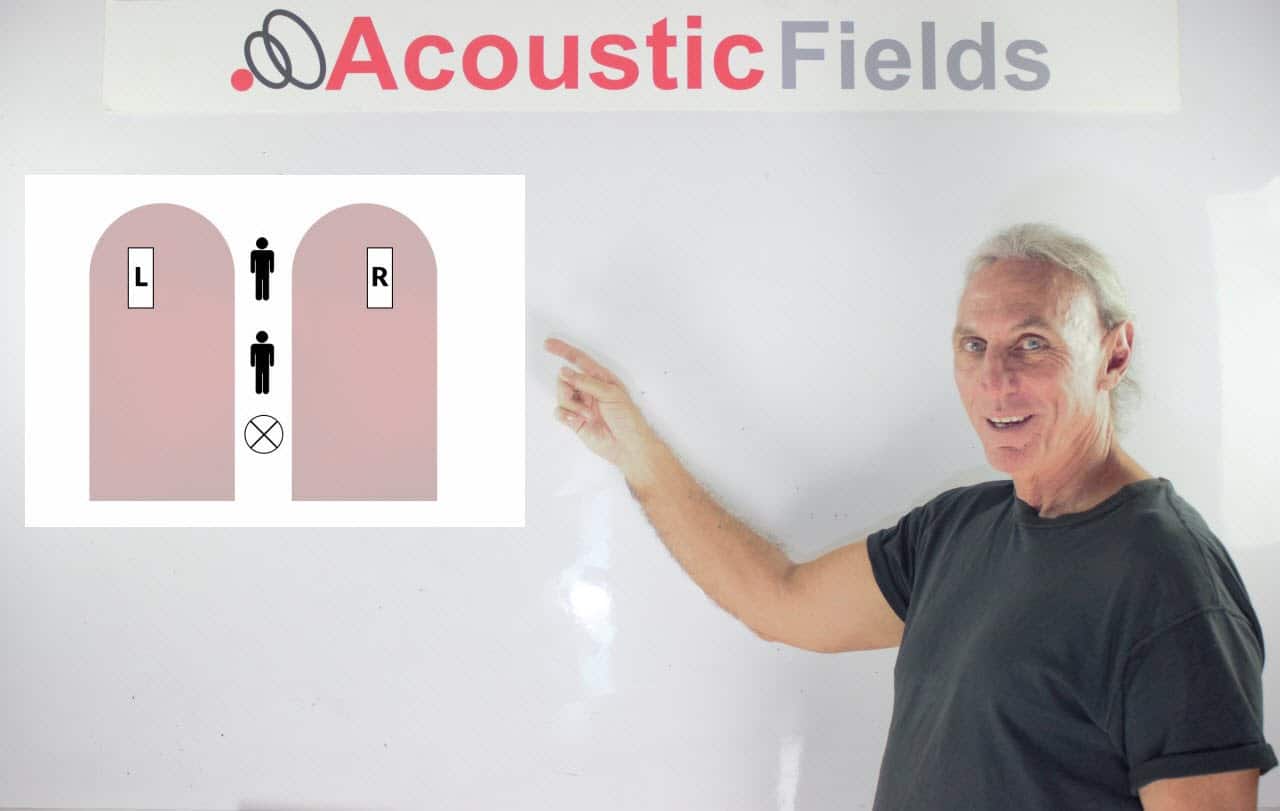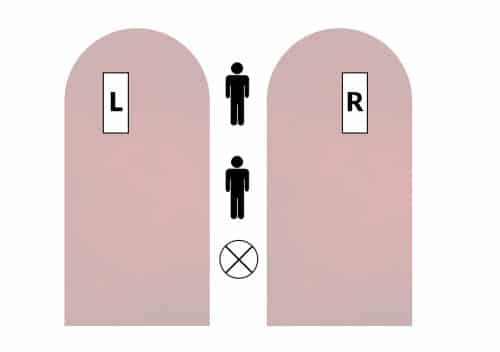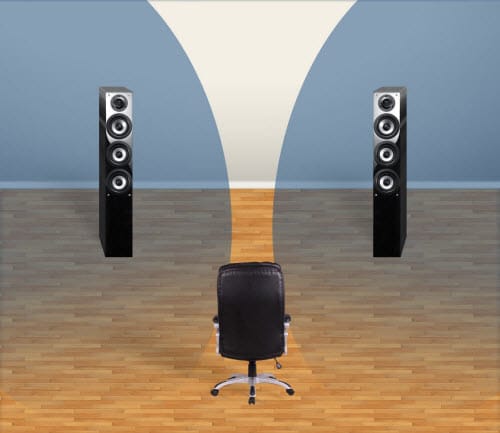Today we’re going to discuss lateral sound fields. We’re going to talk about sound fields over the year 2015 but I want to focus on the lateral sound field today because as control room people, as control room engineers, as audiophiles, as listeners we have to be aware of the lateral sound field which is the horizontal domain in front of us that’s where most of the energy and most of the activity and quite honestly most of the confusion lies. So let’s stay focused on the lateral sound field in the horizontal domain for now.
What are we trying to accomplish within this domain?
At the end of this post I’m going to show you a graphic with some testing procedures that you can do at home to see how well you’ve managed to control the lateral sound field in your listening or control room. So we’re going to talk about pressure versus reflection because those are the two things that we have to deal with: low frequency pressure, reflections off the room surface. Every term, every phenomenon in room acoustics can be broken down into pressure and reflections. We could sit here all day, you could throw terms at me, they would fall in to one of those two category.
So how do we want to treat the pressure and reflections in the horizontal lateral domain? We want equal pressure and we want equal pressure on both room sides. We want equal reflections on both room sides. We don’t want one side having more pressure than the other. We don’t want one side having more reflections than the other. So we’re going to do a little test.
I want you to walk right between your speakers and stand at the middle point facing the front wall. And you’re equal distance between your speakers. Play your favorite music, music that has low-end into it, music that has middle and high frequencies. And just stand facing the front wall. We have speaker here, speaker here and you’re going to stand right here in the middle. And then you’re going to listen. You’re going listen for pressure and your going to listen for reflections. And you should be able to hear those distinct areas on both sides of your room and standing between your speakers or little bit in front of the middle point you’ll be able to get that. So just look straight ahead, listen to the pressure and you’ll hear pressure on both sides and you’ll hear the reflections on both sides.
So, secondly, you want to figure out how much energy is in the lateral or horizontal domain or sound field. To do that I want you to stand, put a little platform behind the listening position and elevate yourself about 1-foot off the floor. Face the front wall and just listen. All the energy in the room should be below or just a little bit above your speakers. So all the energy, all the low, middle and high frequencies that are going on in the sound field that we’re talking about, should be just a little bit above the speakers or below. It should not be in the top of the room. Now, maybe some high frequencies will become airborne so to speak and get their way into the top of the room. We are not going to be too concerned about that. But most of the energy that’s created by your speakers should be in that horizontal or lateral domain and that’s the goal and the room treatment that you use to contain that and manage it should be appropriate on the pressure side and the reflection side.
So in the following graphic we see how we perform this test. We see how the pressure should be equal. It’s a fun test to do just do it anytime and you’ll get the idea right away.
In the next graphic we show the horizontal sound field behind the listening position elevated a little bit and you get an idea of how well your horizontal sound field is defined.
In Summary
To learn more about room acoustics and how drums interact with your room, please sign up to download our free ebooks and video series on room acoustics here. And please let me know if you have any questions at any time.
Thanks
Dennis Foley









